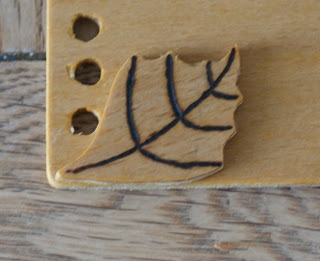I don't seem to have had much time to write posts of late, we've been having a mass spring clean, but I have managed to get some things done round the house, not least the new desk.
We were in need of new desks or something, the ones we had were too small for the amount of stuff we seem to have, and they were both falling apart, so I set about building a new desk, well it's more of a work station, it's built to house everything that we use pc wise, it also meant I had to sort out my stuff, which there seemed to be rather a lot of as I'm a bit of a squirrel (not so much stuff now)
Here's a picture of the desk in use -
We were in need of new desks or something, the ones we had were too small for the amount of stuff we seem to have, and they were both falling apart, so I set about building a new desk, well it's more of a work station, it's built to house everything that we use pc wise, it also meant I had to sort out my stuff, which there seemed to be rather a lot of as I'm a bit of a squirrel (not so much stuff now)
Here's a picture of the desk in use -
 |
| Nothing special, built for function rather than form. |
It didn't have the handles on the cupboard in this picture, I have since added them, handles make such a difference when you need to open a door :-)
I used two of these for the cupboard -
 |
| I think they work well on the cupboard. |
Anyway I've digressed a little. Because we've been sorting things out we also went through the stuff we decided should go, to see if we could do other things with it, which you may think defeats the object of getting shot of it in the first place.
One thing we decided to modify were some shelves that were in our daughters room (she's been spring cleaning as well) instead of throwing them I made a mobile planter for the garden :-) I love recycling.
Here's the planter -
 |
| I'm still not sure about the wheels... |
It was easy to make, the way the shelves were made meant it was simple to take them apart and make them into a box, it took about an hour in all, I even re-used the nails and screws that held the shelves together, the wheels are off one of the old desks, and luckily were just about the right size to fit straight on with no messing around, although I'm not entirely sure they fit in terms of the look of the thing, maybe it'll grow on me, but as with a lot of the things I build I've gone for function rather than form, and I built it to keep plants in.
Okay so it may not be everyone’s cup of tea, but for an hours work (which is all it cost) I think it's pretty good, and the shelves would have gone to the skip as they weren't really good enough for free cycling. Once I built it I gave it a rough sand, just to refresh the wood a little and then gave it a very liberal coating of raw linseed oil to help protect it, the colour has faded a little since the picture was taken, seems the wood was quite dry.
I wondered how much weight it would take, as it turns out it will hold a fair bit, at present it has two large plastic bags full of earth and spuds, which probably weight about 20 kg each.
Testing the planter, I kept hold of the bags in case the wood started to give -
 |
| Even the wheels took the weight, which was a bonus. |
The wheels will come in handy because it makes the planter easy to shift about, saves a little back ache, it will most likely house the bags for some time (probably permanently to be honest) unless I find some other use for it.
The wheels do hold the weight, honest ;-)
 |
| Stops the kids trying to ride it about :-) |
I think it's always worth seeing if something can be used for some other purpose, and if not maybe some one else can find a use for it, in the case of these shelves even if I hadn't made the planter the wood could have been burned in a log burner, even that has to be better than land fill ?
Maybe you have an old set of shelves you could do this with ? why not have a go, you could also use a pallet, as it happens I've just got a load of pallets to turn into book shelves, and probably planters when they have outlived their usefulness ;-) and in case you were wondering the desk is built using floorboards of various types, it's not the first time I've used floor boards, I've also built a bookcase for my sons bedroom and a fire surround, I have plans to build more furniture using floorboards.
Thanks for reading.




























